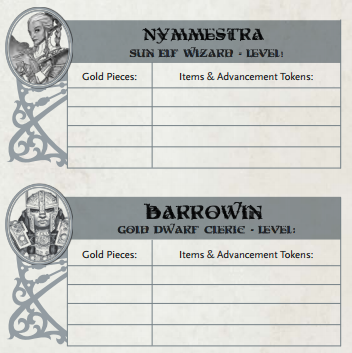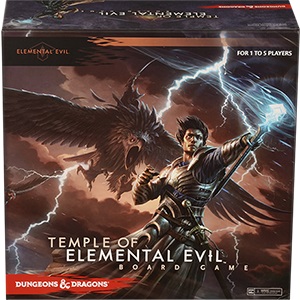
The connected nature of the campaign goes beyond character improvement, though. At the end of each scenario, more monster and encounter cards are added to the appropriate decks. The more you play, the better the characters get, so more difficult monsters and nastier encounters are needed to challenge them. I really enjoyed this aspect of the game. Even if you don’t know what cards have been added, it’s more exciting to draw a monster when you know it just might be something you’ve never fought before, instead of water cultist #12. The sense of progression from one scenario to the next is much more meaningful than the rather tenuous connections of scenarios in the previous games.
But the continuity of the campaign system is not the only addition to the Adventure System found in Temple of Elemental Evil. Perhaps the most obvious, in hindsight, is the way monsters are handled. In prior games, when you drew a new tile, it would always have one monster on it (unless you were playing one of the few scenarios with special rules for this, of course). While there was a variety in which monster would appear, based on the card you drew, you pretty much knew what to expect. In the new game, each tile has between zero and three monster squares on it. This adds an incredible amount of tension to the simple act of drawing a new tile. Will you get lucky, and draw an empty room? Or will a cultist and two gnolls appear instead? I suspect that the average is still very close to one per tile, but the uncertainty will keep cautious players on their toes.

Another welcome change is a revision of the trap system. Good dungeons have traps, that’s par for the course, but the implementation in the first three Adventure System games was somewhat clunky. Traps were part of the encounters deck, and were represented by large tokens placed wherever players chose on the target tile. In Temple of Elemental Evil, traps are represented by symbols on on individual squares on certain tiles. Small tokens are placed on these tiles, and if a player chooses not to disarm them, they go off when stepped on. These traps are much more difficult to avoid, and often block squares that would otherwise be great places to explore, or fight more effectively. The trap system feels more authentic to the classic dungeon crawling experience, and more thematic as a result.
Temple of Elemental Evil takes the solid foundation of previous D&D Adventure System games and adds to it considerably. The campaign is a great way to spend time with a regular game playing group. The tweaked monster and trap rules are a straight upgrade to the mechanics of prior games. If you didn’t like prior games in the series, I don’t think Temple of Elemental Evil will change your mind. However, if you played and enjoyed any of the others, the latest game is certainly worth checking out. Temple of Elemental Evil is clearly the best game of the lot, and one of the finest Tabletop Co-op games available.